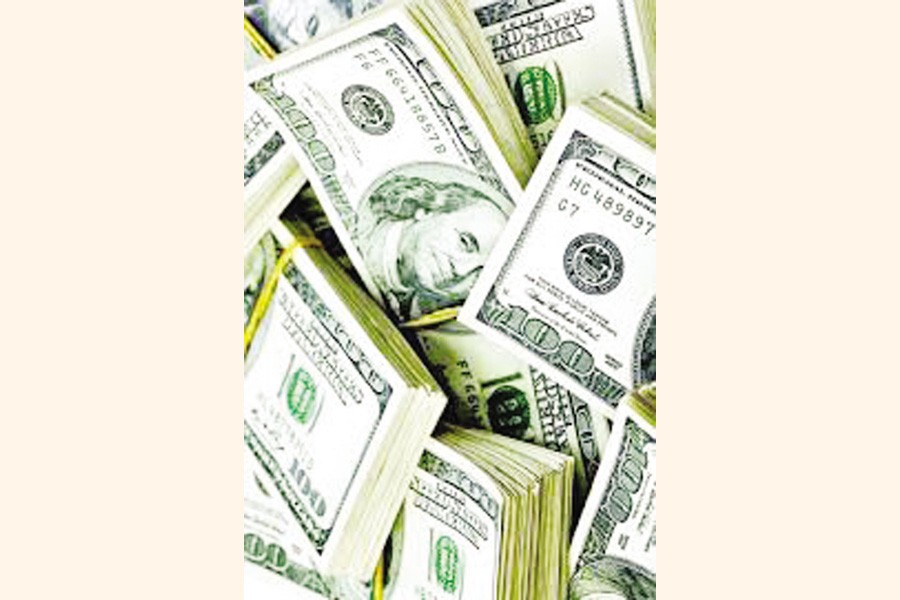
 Bangladesh faces some challenges on the economic front -- persisting dollar crisis, depleting foreign-exchange reserves and steep inflation being daunting ones. Liquidity pressure on the banking system, much of it believed stemming from bad-loan buildups, is also among major areas of concerns. And this happens to be all the more troubling being coupled with emerging challenges in socio-political arena ahead of the upcoming national elections, scheduled for January 7, 2024.
Bangladesh faces some challenges on the economic front -- persisting dollar crisis, depleting foreign-exchange reserves and steep inflation being daunting ones. Liquidity pressure on the banking system, much of it believed stemming from bad-loan buildups, is also among major areas of concerns. And this happens to be all the more troubling being coupled with emerging challenges in socio-political arena ahead of the upcoming national elections, scheduled for January 7, 2024.
People in general have been bearing the brunt of the higher inflationary pressure over the months with prices of most consumer items maintaining exorbitant highs. Higher import costs due to increased dollar prices against the local currency following the global economic rescission, mainly caused due to the Russia-Ukraine conflict, are blamed for the situation.
Apart from the higher dollar price, the country is struggling with a dollar shortage due to the ongoing external factors. The country's foreign-exchange reserves have now come down to as low as US$19.6 billion by a new method of reserves accounting. The existing reserves can now meet just three-plus months of import costs for the country. Rising import costs and less-than- expected levels of export receipts and inward remittances are seen as main reasons for the forex crunch.
The global credit ratings agency Moody's Investors Service in a report recently said a drastic fall in foreign- currency reserves put Bangladesh's balance of payments (BoP) at a moderate risk among four South Asian countries. The Moody's report came as the reserves continued to dip fast, taking its toll on the country's balance of payments with widening deficit in the financial account and current account.
Due to the ongoing dollar dearth, the banks operating in the country are walking a tightrope in opening required letters of credit (LCs) for imports. As a result, they were learnt to have purchased dollars at much higher rate than the usual. The central bank of Bangladesh recently instructed foreign-exchange houses not to buy the greenback from the remitters beyond the fixed rate of Tk 116 a dollar. At a meeting with top executives of foreign-exchange houses, the Bangladesh Bank also asked them to follow the rules and regulations for selling remittance to banks.
The central bank came up with the regulatory whipping as the foreign- exchange houses were buying dollar from remitters at a rate of Tk 123 to 124. Besides, the price of dollar also hit as high as Tk 128 on the kerb market in recent times.
The value of Bangladesh taka (BDT) started getting devalued as the global market became volatile due mainly to the fallout of Russia-Ukraine war. The rate of dollar against BDT was about Tk 85 to Tk 86 in early 2022 and thereafter the exchange rate started swelling up, and the climb continued. Now the interbank rate of a dollar is varying between Tk 110 and Tk 111 and. However, many banks were reportedly charging higher from the importers for LC opening.
On the other hand, the exchange rate of the US dollar reached Tk 128 on the kerb market although BB sources said it is Tk 118.50 a dollar.
To help heal the forex-market doldrums, the central bank had taken some steps, including introduction of multiple-exchange-rate mechanisms, punishing banks for selling dollars at higher prices, and new price mechanism for forward trading. In the backdrop of the prevailing foreign-exchange crunch, Bangladesh Bank finally decided to introduce a unified exchange rate with effect from July 2023, putting an end to the multiple exchange-rate regime.
In the meantime, the central bank changed its decision regarding going for a free-float exchange rate, in the last resort, in view of national elections ahead.
The BB had introduced unified exchange rate in order to help ease pressure on the foreign-exchange reserves, but it hardly yielded a desired outcome due to delay in implementation.
To meet banks' demand for dollar for import purpose, the BB continued to sell dollars from the reserves, adding to the pressure. Although Bangladesh's foreign-exchange reserves stood high at around US$45 billion in February 2022, the fall has continued since then, with the amount dipping down $20 billion.
Such unrelenting fall in the reserves has been attributed to factors that include slower growth in the country's merchandise exports, a downward trend in the inward remittances and higher import payments.
Bangladesh's earnings from shipment of products fell by 13.64 per cent year on year in October. The country's export receipts stood at $3.76 billion last October against $4.35 billion in the corresponding month of previous year. However, overall export earnings grew by 3.52 per cent year on year to $17.44 billion during the July-October period of the fiscal year (FY) 2023-24, reflecting lower growth over the matching period of preceding year. Although export earnings witnessed a robust growth of 15 per cent in July, the pace of growth slowed in the following months, official data revealed.
The recent workers' agitation on demand for raising wages in the apparel sector coupled with the ongoing political unrest ahead of the upcoming national elections might have taken a toll further on the country's exports.
On the other hand, the country's inward remittances hit a 41-month low in September 2023, totalling US$ $1.34 billion. Previously, the lowest remittance inflow was recorded at $1.09 billion in April 2020, when the Covid-19 pandemic had invaded the world, according to data from the Bangladesh Bank. In August 2023, the remittance inflow saw an 18.78- percent fall over that in the previous month as the country received $1.6 billion worth of remittances in the mentioned month.
A big gap in the exchange rates of the US dollar between the formal and informal exchange markets remained a major reason behind the fall in inward remittances despite a significant outflow of migrant workers from the country. Many expatriate Bangladeshis prefer to send money through informal channels because of having higher rates in the informal channels than in the formal gateways. Although the government and the central bank took some measures, including introduction of certain rate of subsidy by the government, to attract remitters, those hardly saw any visible outcome due mainly to such exchange-rate gaps.
However, a downward trend in the opening of letters of credit for imports following some restrictions helped lessen the pressure on the country's foreign-exchange reserves to some extent. According to the central-bank data, the LC opening in September fell by 22.64 per cent to $4.68 billion compared to that in the same month of the previous fiscal year. According to the latest data, $4.68 billion worth of LCs were opened in September, down from $5.59 billion in the previous month. The data also showed that LCs involving $6.05 billion were opened In September last year.
At the beginning of this year, the IMF had set the target of the country's foreign m-exchange reserves to be $25.34 billion by September and $26.81 billion by June of next year as conditions loaded in its loan package, as the government approached the multilateral lender for budget-support credits. Since the reserves remained below the target set by the IMF as per its BPM6 accounting system, the government requested the Fund to relax the prerequisite recently. It worked. The IMF bent the target and Bangladesh committed to keeping the reserves at $18.4 billion at the end of this December and at $20 billion at the end of June next year.
The overall situation has come to such a pass that it has become imperative to pursue prudent steps to give an impetus to export, pay proper attention to the growth of inward remittances through checking informal trading in foreign currencies and thus enhance the foreign-exchange reserves.
Besides, measurers ought to be taken to keep the country's import payments at a reasonable level through curbing imports of less important or unnecessary products in the wake of the prevailing dollar and forex crunch.
smjahangirfe@gmail.com
© 2025 - All Rights with The Financial Express
